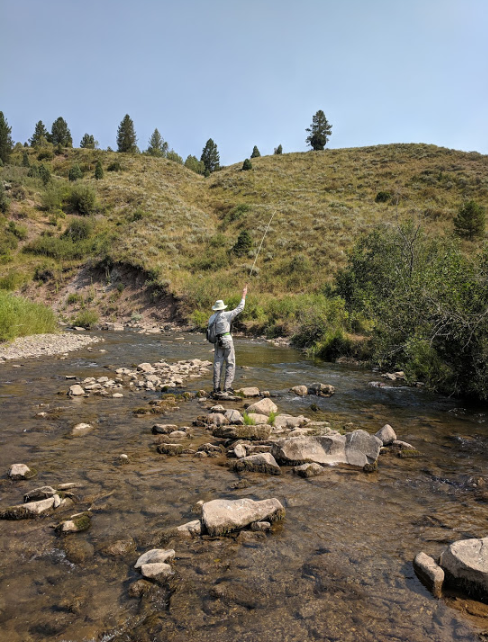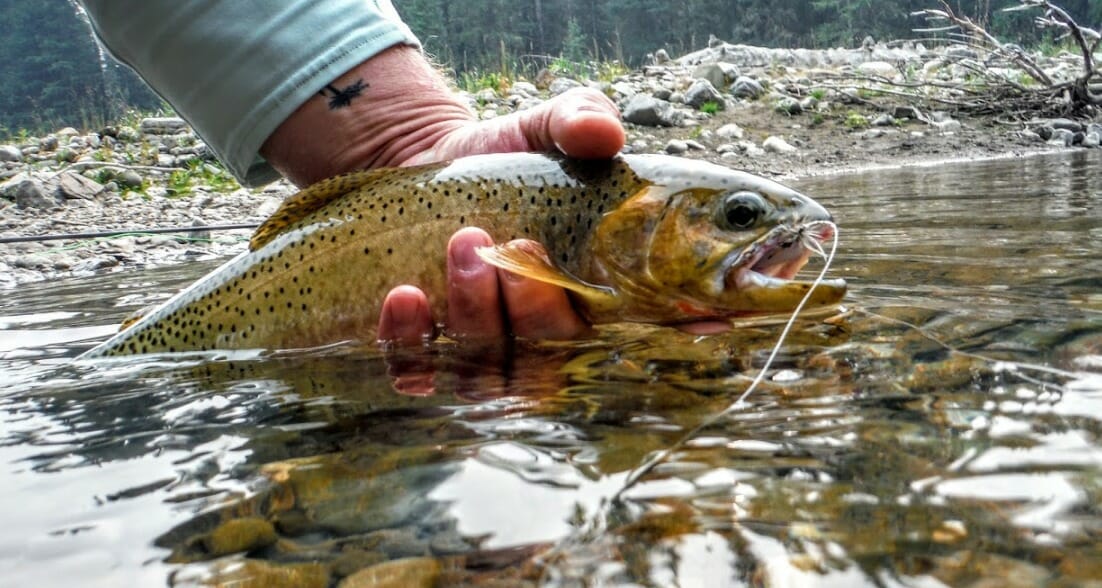Editor’s note: This is the first in an ongoing series meant to give those who are interested in learning to fly fish the perspective and advice needed to get started. More installments will follow. If you have specific questions about fly fishing, feel free to add a comment below, and we’ll do our best to answer them for you.
So you got that new TU membership over the Holidays (and thank you, by the way), and your New Year’s resolution is to finally learn to fly fish. You’ve seen the fly rodders on the local river for years, and it looks so … peaceful. You’ve always wanted to learn how to do it, but you’ve never really had anyone to guide you through what seems like an amazingly complicated process.
It’s OK. We’re here to help.
The first thing you did right was join TU. You’re now connected to the largest network of fly fishers on the planet, and you’re a part of one of the great forces for conservation good in the land. Now, it’s on you to get to your first chapter meeting, and meet the folks in your community who not only know how to fly fish, but who work every day in your home waters to make fishing better for everyone. Don’t be shy. These are great folks who aren’t only able to help you with all the little things that make fly fishing seem so complex, they’re eager.
In other words, you’re wanted, and you’re more than welcome–you are valued.
These are the folks who will help you with all the questions, from how to rig your new fly rod (see the video above from RIO Products for a quick primer) to recommending a good casting coach (usually another volunteer who’ll help you out free of charge) to where to actually give fly fishing a try for the first time. Don’t be shy, and don’t be embarrassed–we all started in exactly the same place you find yourself in now. There’s no reason to be intimdated.
I’ve had the good fortune to visit with TU volunteers all across America over the last decade and a half–many are now dear friends, and most are true conservation champions. Virtually all of them are fly fishers, and they are all more than willing to help a newcomer to the craft get started, and help someone like you–who looks at fly fishing and all its trappings and feels immediately exasperated at all the complexities that accompany the sport–navigate the perception that fly fishing is just too difficult to undertake.

Here’s some quick advice: Don’t believe the hype. It’s not that difficult to get started, and it’s not nearly as complicated as it might seem. And, no, contrary to popular opinion, it’s not all that expensive, either. I get that, over the Holidays, you might have done some web sleuthing and come to the realization that anything that requires an investment of $1,000, just for the rod, is probably not for you.
Take heart. A good rod and reel that will last you years and get you started can be had for a fraction of that price. As can a pair of waders, a fishing vest and all the basics you’ll need to enjoy time spent on the water. It’s always been a head-scratcher to me when folks in the traditional gear-fishing community complain about the price and the effort involved to get started fly fishing, all while sitting in a $40,000 boat towed by a $60,000 truck.
Like anything else, fly fishing is as complex and expensive as you make it. I would certainly not recommend that you start with a $1,000 fly rod or a pair of $800 breathable waders. I can’t count the times I’ve seen new anglers completely outfitted with the latest and greatest gear, only to discover that, by and large, the initial four-figure investment was virtually unnecessary. For some scale, consider this: I’ve been fly fishing for almost 30 years, and my go-to set-up for fishing an average trout stream includes a light fly rod, a lanyard or a sling pack that can hold all my flies and needed tools, a pair of shorts and some wading sandals. Throw in a bottle of water and a pair of decent polarized sunglasses and I’m generally good for the day.
Down the line, if you grow to love the sport and yearn to diversify and chase fish in different environs and different area codes (or even different hemispheres), you can weigh the wisdom of a much larger investment.
For now, an entry-level rod and reel is likely all you need. And go to your first TU meeting. You’ll be glad you did.
— Chris Hunt



